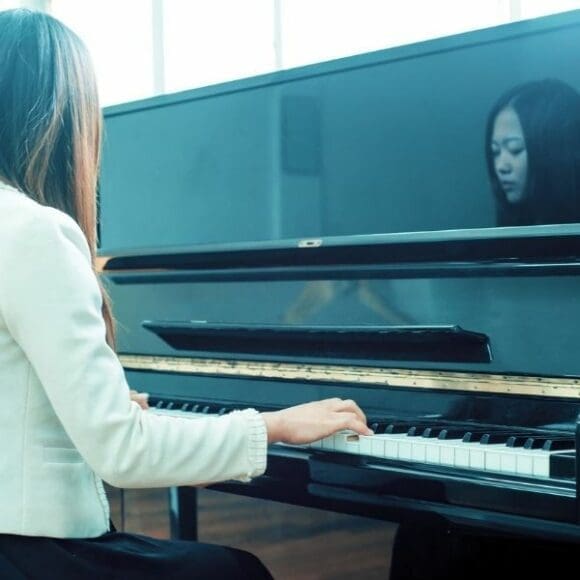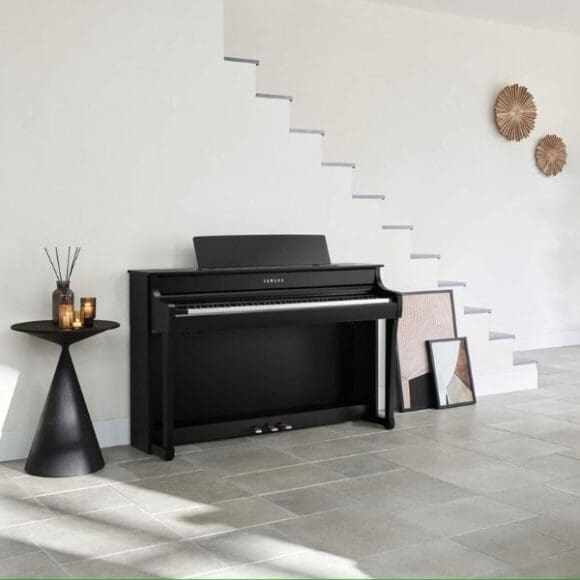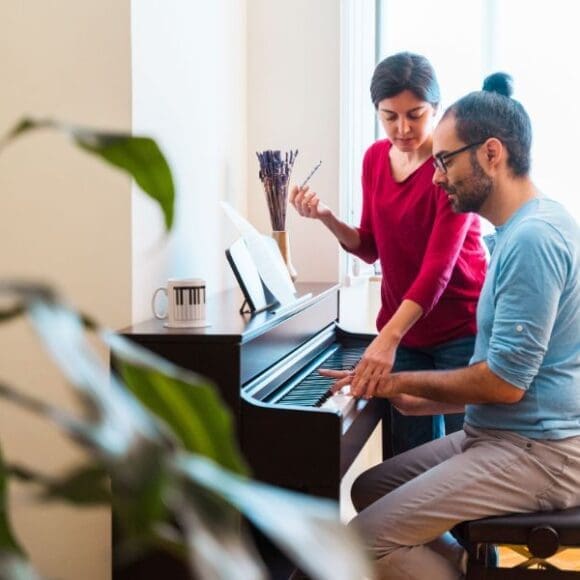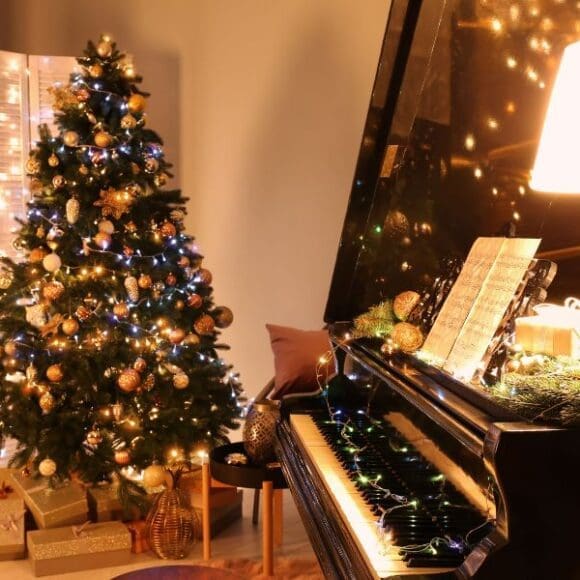When purchasing a piano, you’ll no doubt already have pictured it in situ and spent time double-checking measurements to ensure it will fit. That’s great – and certainly advisable – no one wants to discover that they can’t even get their new piano through the door! Yet, whilst the perfect position is largely down to aesthetics and finding a spot that will offer you the most pleasure, it’s not the only consideration.
Why? Because despite their grandeur, pianos can be surprisingly sensitive. Their placing in your home can not only impact performance but their lifespan too.
Worth then, giving a little more thought to where your instrument will go. Here the experts at Richard Lawson Pianos take a closer look at the best – and worst – places to position your piano.
Things to think about
To decide on the best place to put your piano there are a number of key factors to consider, these include:
· The temperature of the room
When it comes to pianos, consistency is key. Is the lounge cold and empty during the day but roasting hot when everyone relaxes in there at night and the fire is burning? This is no good for your piano.
Pianos prefer a room that remains at a moderate – and stable – temperature. Around 20°C is ideal.
To maintain consistency, avoiding sitting pianos against outside walls or anywhere draughty is also advisable.
· Central heating
With temperature in mind, it’s important to consider central heating.
Placing your piano right in front of a radiator may make for toasty toes in winter but it won’t be beneficial for the longevity of your instrument.
Central heating affects the humidity of a room, causing it to rise when the heating is switched off and drop when it’s on. This change in the atmosphere can play havoc with the strings and wooden framework – causing problems such as cracked soundboards, loose keys and split bridges in the long term.
To find out more about the effects of heat on pianos, check out our blog on the topic.
· Underfloor heating
Underfloor heating may be seen as a modern-day luxury, but it can be detrimental to pianos.
If you have a room with underfloor heating – avoid it! If that’s not possible, then invest in a heavy-duty rug – ideally one with a heat-protective lining – to place under your instrument.
· The environment
Heat and humidity are the big issues when it comes to protecting your piano, so it’s worth avoiding open plan kitchens where there’s increased exposure to heat and steam from cooking. Proximity to a bathroom with escaping hot air is also a consideration.
If humidity remains a concern, consider purchasing a humidifier to help regulate the atmosphere.
Heat and humidity aside, it’s also worth thinking about the environment as a whole. What else is the room used for? How busy does it get? Is it a thoroughfare? How the location is used should play a key part in its viability for housing your precious piano.
· Windows
The image of daylight streaming in through the window and dappling across the keys is as pretty as a picture – but the reality is far uglier.
Aside from the impact direct sunshine can have on the temperature and humidity of a room, it can also fade and impair the finish of a piano.
If there’s no escape from a window, take care to draw your curtains on particularly sunny days, or purchase a large cover or blanket that can be thrown over the piano’s surface.
So where is the best place for a piano?
Ok, so now you know what to try and avoid – but where does that leave you? Where is the best place to keep your piano?
The obvious answer here is in a purpose-built music room…but how many of us are lucky enough to have one of those? Instead, how about the dining room? This is usually one of the most stable rooms in the house in terms of temperature and humidity. It’s also a great spot if you’re keen to offer a little entertainment for dinner guests and keeps your piano away from the hustle and bustle of busier areas (such as the lounge) – perfect for when you need to practice.
Dining room not big enough? Then the solution is to position your piano wherever you have a workable amount of space; just try to be mindful of the points outlined above to find the optimum setting.
Need to move your piano?
If reading this has made you rethink the location of your piano and you decide to shuffle things about, great. But don’t forget that it’s recommended to allow around 3 weeks for the strings to settle and for your piano to adjust to its new surroundings before then scheduling in to have it properly tuned.
Got a bigger move in mind? If you’re moving house or relocating your piano, it’s always worth employing the help of professional piano movers to prevent any damage and ensure the utmost care is taken.
Talk to the experts
Here at Richard Lawson Pianos, we eat, sleep and breathe pianos. Not only do we offer an excellent range of pianos for sale or hire, we also provide professional tuning and piano moving services. So, whatever your piano needs, we’re here to help.
Why not get in touch with the team to find out more about what we do? You can call us on 01923 720 974, email infor@richardlawson.co.uk or fill in our contact form.

















 Reviews
Reviews